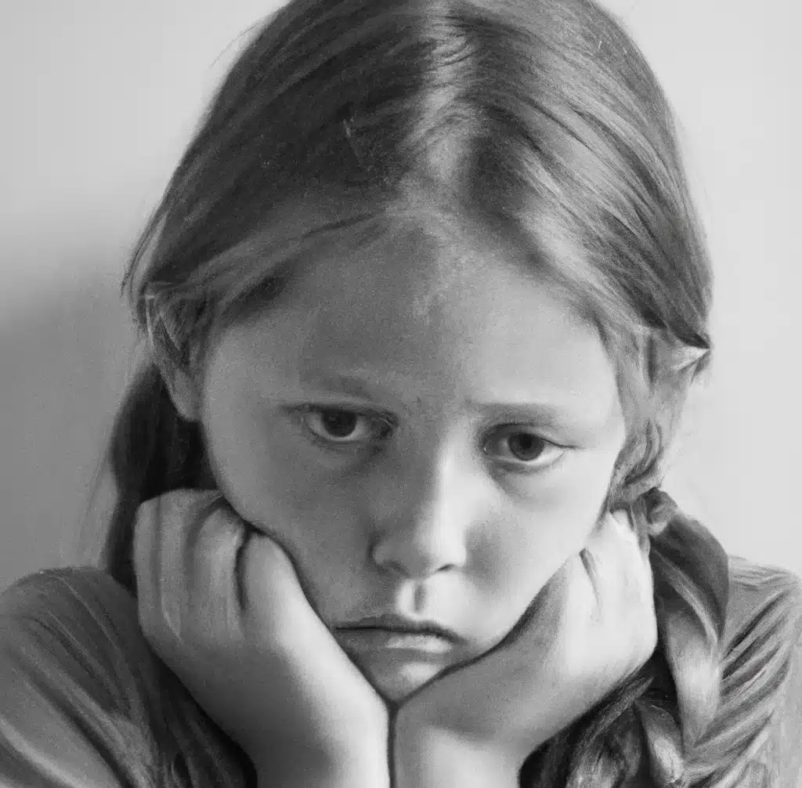Hello brave parents and caregivers,
Is it just me, or is anxiety in full swing these days? Whether it’s friends’ kids who have trouble sleeping or patients worried about an upcoming school project it seems like anxiety is all around.
Anxiety, worries, and, fear are common in childhood and may be exacerbated by academic demands, troubled home environments, stressful peer interactions, or exposure to scary content, just to name a few.
Let’s take a close look at how to recognize and approach anxiety in children.
Symptoms of Anxiety in Children
Physical
Dizziness, sweating, muscle tension, stomach upset, increased heart rate, bowel changes, shortness of breath, tingling feelings, nausea, feeling cold
Emotional
Feelings of dread, worry, panic, fear, irritability
Behavioral
Avoidance, restlessness, distractibility, hypervigilance, inattention, outbursts, nail-biting, compulsions
Cognitive
Catastrophic thinking, negative beliefs about the world, mistrust of one’s own coping ability
Interpersonal
Trouble participating in class, struggling during unstructured time (e.g., parties or recess), self-consciousness, high sensitivity to negative evaluation by others, trouble working in groups or participating in team sports
Evaluation of Anxiety in Children
With family and friends, I often find myself in a place of advocating for children who are described as “just shy” or who, filled with worry, can’t sleep the night before a test, but “that’s just the way he is”. Anxiety is impairing, distressing, and different than temperament. And, it is often not outgrown. Anxiety in childhood is associated with anxiety later in life, which can limit functioning in many spheres throughout adulthood. Fear lies at the root of anxiety and is a scary place for children and adults alike. Seriously, who wants to live in fear?
A mental health professional may start with a verbal interview to explore a child’s experience of anxiety. S/he may also provide rating scales for parents, teachers, and/or the child to help track symptom improvement. Also, please keep in mind that as a part of the assessment process, it’s a good idea seek a medical evaluation to rule out physical problems that may masquerade as anxiety.
Three Cognitive-Behavioral Therapy Techniques to Help Children with Anxiety
Self-monitoring
The level of distress a child is experiencing can guide intervention. Remember that in a state of high emotional intensity it’s difficult to access the “thinking” or rational brain. A feelings thermometer can help. This is a 5-step, color-coded scale ranging from 1 (“I feel calm and in control”) to 5 (“I feel out of control”) replete with feelings faces for non-readers. If a child is in 4 or 5 territory, deep breathing is usually the starting point. Something along the lines of mindful, controlled breathing can be helpful: Inhale “calm” through the nose and exhale “worries” through the mouth while progressively relaxing different muscle groups. IMPORTANT: Practice deep breathing when a child is calm; this will make it easier to access this coping skill when emotions are heightened.
Cognitive Self-Control
Cognitive techniques improve coping, test inaccurate anxious thoughts, and increase control over worrying. Children with anxiety often don’t believe they have what it takes to cope with stress, making them feel incapable of managing life’s challenges. Not surprisingly, this breeds a ton of worry. Cognitive techniques empower them and lay the foundation for confidence, adaptability, and a sense of agency.
Talking back to worries
It’s important to remind kids that everyone gets scared sometimes, it’s a normal part of being human, and that scared feelings, like the wind, will pass.
Examples of how to talk back to worries:
- I know I can do this. My fear makes me think that I can’t, but I know I can. This is just fear talking.
- Chill out and take some deep breaths. I can talk back to my worries.
- Fear is lying to me. I don’t have to listen to it.
- My fear is a bully. If I talk back to it, it’ll back down.
One fun way to practice talking back to the “worry bully” is to role play with stuffed animals or puppets. It might also be helpful for your child to write her talking-back ideas on notecards, aka “coping cards”. To help them stick, practice reviewing them when she is calm.
Challenging anxious thoughts
We’ve all experienced the dreaded what-ifs. Anxious children may have excessive what-if worries, like, “what if I forget everything I know, fail my test, can’t get into college, and end up without a job or family or friends or….” You see what I mean. The worries often involve catastrophizing, or expecting the worst to happen.
Let’s take the example of a child who’s worried he’ll fail an upcoming test. Asking Socratic questions explores if his worry is truly well-founded and helps him to realize he may be more capable of handling the feared situation than he realizes.
Try asking him these questions to challenge his worry:
- How sure are you the worry will really happen? “Very sure!”
- Has it happened before (if it has, go to the last question below)? “Um, no”
- What makes you think it’ll happen now? “My worries won’t stop; they make me think it’ll happen.”
- If it has happened before, how bad was it really? “Well, it hasn’t happened before. But I almost failed a test once. Nothing really bad happened. My teacher let me re-take part of it and I did okay.”
Containing worries
The more a child thinks about worries, the more they grow; working hard to suppress or avoid worries gives them attention, also making them stronger. “Talk time” is a cool technique described in Huebner’s What to Do When You Worry Too Much: A Kid’s Guide to Overcoming Anxiety. It involves setting aside about 15 minutes each day for a child to talk about his worries. If he worries during the day, he can save the worries until talk time. Postponing the worries helps him gain cognitive control over them and keeps them contained while still acknowledging them. And, once talk time rolls around, he may find that many worries from earlier in the day have subsided, teaching him that worries really do come and go.
Exposure
Exposure-based therapy can help with many types of anxiety, including social anxiety. Kids with social anxiety worry that they’ll be negatively evaluated by others, leading to fear that they will embarrass themselves or be criticized. These fears can be severely limiting. For instance, social anxiety can cloud academic skills, lead a teacher to doubt a child’s abilities, fuel the child’s worries about being judged, and decrease her self-confidence—a vicious cycle.
Exposure therapy is performance-based and is typically carried out in a graduated way, challenging kids to confront their fears from least scary to most.
Let’s take the example of a girl who’s afraid to read aloud in class, an excruciating prospect for a child with social anxiety.
The first step is to collaborate with the child to develop a hierarchy of tasks designed to overcome her social anxiety, from least to most feared. The idea is that by practicing asserting her voice in small steps, it gets easier; like building a muscle at the gym, it builds her brain for more skill and comfort in social situations one step at a time.
An exposure ladder might look something like this:
Imagining herself reading aloud to her class (least scary)
⬇︎
Reading aloud to herself
⬇︎
Reading aloud to her family
⬇︎
Introducing herself aloud at a library story time (getting scarier)
⬇︎
Talking to a friend in the classroom loudly enough so others can hear her
⬇︎
Individually asking the teacher a question
⬇︎
Asking the teacher a question in front of the class (much scarier)
⬇︎
Reading aloud individually to her teacher
⬇︎
Reading aloud to a group of friends in the classroom while other classmates can hear her
⬇︎
Reading aloud in front of the class (scariest)
Parents, a socially anxious child is likely to struggle with any one of these tasks. At library story time, she may not introduce herself at first or even at all, resulting in awkward silence. Or she may appear visibly nervous or trembling. The key here (and this can be oh so difficult) is not to rescue her by taking over or answering for her. This only reinforces the idea that she is weak, which lowers her confidence and reduces her opportunity to gain critical social skills.
Just tolerate the awkwardness; it’s so hard, but it’s worth it.
Brave parents and caregivers,
Though these techniques can be applied in the home setting, this article is not a substitute for formal participation in therapy. If you suspect your child is struggling with anxiety, please seek an evaluation; your pediatrician is a good place to start. Together, let’s promote the healthy development of our children and help them build their lives free of fear.
And, if you are interested in learning more about therapeutic techniques to combat your child’s anxiety, check out Huebner’s What to Do When You Worry Too Much: A Kid’s Guide to Overcoming Anxiety. This collaborative workbook is full of engaging and therapeutic activities to help kids understand their worries and to learn ways to fight them.
Until next time,

References:
- Friedberg, R.D. and McClure, J.M. (2012). Clinical Practice of Cognitive Therapy with Children and Adolescents: The Nuts and Bolts. Guilford Publications.
- Huebner, D. (2006). What to Do When You Worry Too Much: A Kid’s Guide to Overcoming Anxiety. Magination Press.


